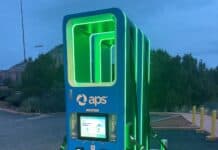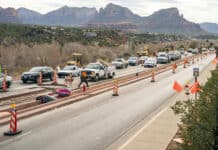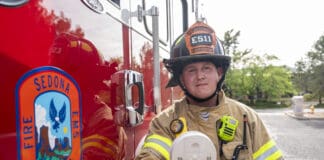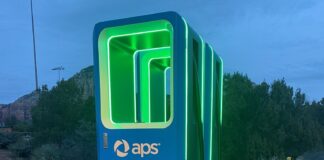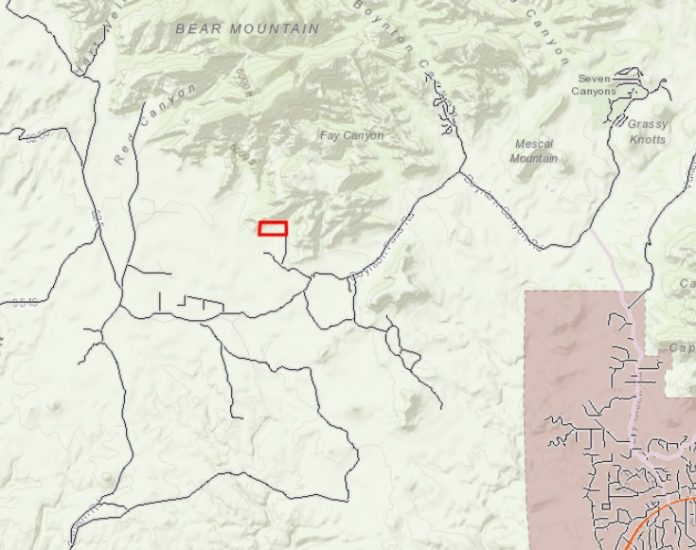
The Sedona City Council was being asked — in essence — to provide a letter of recommendation like one would with someone applying for a job. But after two-and-a-half hours of discussion, council didn’t provide one.
On Tuesday, Oct. 27, council heard a presentation on a proposed 100-unit, high-end camping area in Boynton Canyon off Dry Creek Road that would feature Airsteam travel trailers for nightly rental. But council members echoed the concerns of more than a dozen residents who spoke.
While some said the Airstream camp is a nice project, most agreed the location is the biggest concern.
Since the project is outside of city limits, council does not have a say as to whether or not it’s approved. However, as a referral agency, the city will send a letter to Yavapai County with an overview of the concerns from council, staff and the public.
AutoCamp, an outdoor lodging company founded in Santa Barbara, Calif., is looking into the possibility of building a campground that would feature 100 Airsteam trailer or tent sites on nearly 19 acres. The site is located approximately six miles northwest of Sedona, accessed via Forest Road 152E and Boynton Pass Road. AutoCamp will be seeking a zone change from rural residential to a planned area development.
The company is under contract to purchase the property, which is currently zoned residential for nine homes. The project will now move through Yavapai County’s rezoning process.
Assistant City Manager and Community Development Director Karen Osburn said the city was first approached for feedback on the project in the summer.
“Since then there hasn’t been much activity at our staff level until Yavapai County reached out to us, which is a normal protocol for them to ask for referral agency comments when there’s a development that may have an impact on a neighboring jurisdiction,” she said. “We do the same when it comes to development proposals with the counties, fire district, [Arizona Department of Transportation], U.S. Forest Service and so forth. What isn’t typical protocol is to have a conversation like this and bring that to council.”
In her eight-and-a-half years with the city, Osburn said the only other time she could recall this happening was with the proposed El Rojo Grande development less than two years ago. And like that project, AutoCamp’s proposal has sparked a lot of community input, but on a lesser scale.
“This is a good project in a good location, a beautiful location and a sensitive location,” said attorney Whitney Cunningham, who represents AutoCamp. “This is a really beautiful place that really needs to be taken care of.”
Cunningham said that in discussing the project with residents, the concerns have remained relatively the same. He then addressed some of those concerns — which were expressed by those in the audience — including fire hazards, dust, increase in traffic, cultural preservation and dark-sky and noise issues.
“We need to remember, the choice is not between AutoCamp and open space,” he said. The owner has decided to sell this property and what it’s zoned for is up to nine private residences. Let’s all be clear and honest with each other — you’re talking about nine mansions in Boynton Canyon. You’re talking about nine VRBOs [vacation rentals], and that’s really the alternative and we shouldn’t lose track of that.”
The project calls for the following:
■ A 4,500-square-foot clubhouse and check-in building.
■ 124 on-site parking spaces.
■ Ancillary amenities, e.g. fire pits, shade areas, pool, patio decking, fire pits, gardens, social points of interest, onsite trails, staging area.
■ Supply building.
■ On-site wastewater treatment and disposal system.
■ An outdoor multi-purpose pad that will serve to accommodate a variety of guest events such as weddings, corporate work space, etc.
■ 100 campsites, 95 connected to water, sewer and electrical [including a proportion of ADA compliant units], and five standalone tents connected to water and electrical. The standalone tents will have access to bathroom and shower facilities in the clubhouse.
■ A 100,000-gallon, underground water tank.
In all, 16 members of the audience spoke during the meeting, all of who were opposed to the project. As Cunningham mentioned, many of those concerns are ones the developers have been hearing over the last few months. But the biggest was fire risk. While the plan calls for clearing a lot of the dead brush and debris, many said they have fears that a wildfire could be started by one of the 100 proposed fire pits. Others feared that traffic would increase, as well as parking along Dry Creek Road.
Janet Johnson summed up the feelings of many who spoke by saying, “It’s like you’re pouring gasoline on an already burning fire in terms of our quality of life.”
Council had many of the same concerns as the residents as well as their feeling that this project would have little benefit to the city or county and with as many as 45 proposed staff members, asked where would they find housing in a market already stretched to its limit.
The day after the meeting, AutoCamp Acquisitions Manager Bernie Corea said even though their project is within Yavapai’s jurisdiction, they appreciated the candid feedback provided by council and the perspectives shared by the public,
“AutoCamp will use the feedback and suggestions from all the citizens groups and public service departments we have engaged to refine our project to ensure that it respects and is compatible with this very special location,” Corea said. “AutoCamp looks forward to becoming a valued part of the Sedona community and providing a safe and enjoyable atmosphere for visitors and members of the community to enjoy and immerse themselves in the outdoors.”



